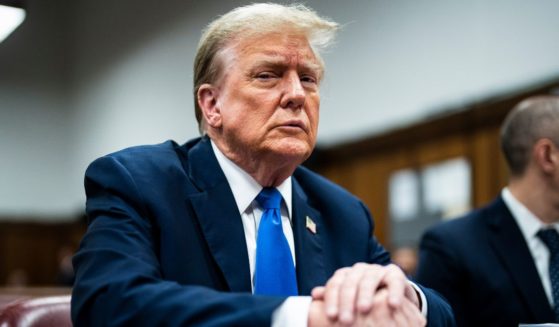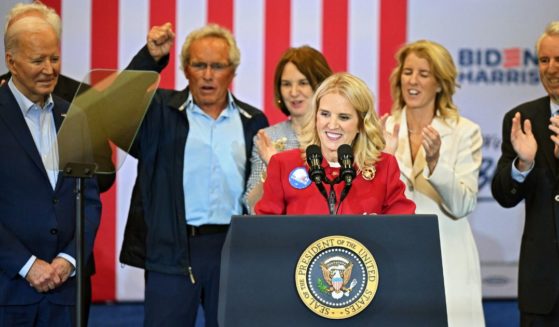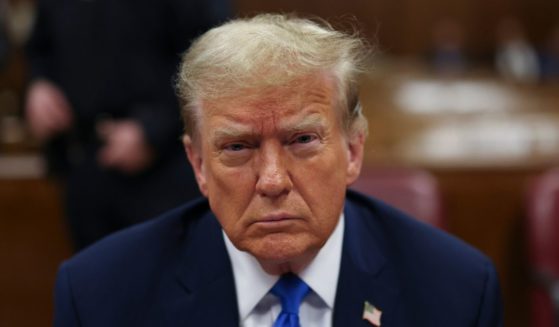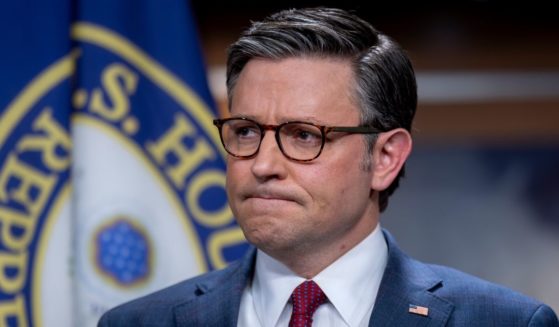AP FACT CHECK: Trump exaggerations on wall, NKorea, economy
WASHINGTON (AP) — Over the past week, President Donald Trump declared that the remains of U.S. service members are “back home where they belong” from North Korea, though that mission has barely started and already has run into a roadblock. He exaggerated economic performance under his presidency and the progress of the border wall that Congress, so far, won’t pay for.
A review of his recent rhetoric and its relationship with the facts:
NORTH KOREA
TRUMP: “The Fake News Media loves saying ‘so little happened at my first summit with Kim Jong Un.’ Wrong! After 40 years of doing nothing with North Korea but being taken to the cleaners, & with a major war ready to start, in a short 15 months, relationships built, hostages & remains … back home where they belong, no more Rockets or M’s being fired over Japan or anywhere else and, most importantly, no Nuclear Testing.” — tweets Thursday.
THE FACTS: Trump is exaggerating progress with North Korea and overstating what’s been done to return the remains of U.S. soldiers who fought in the Korean War in the 1950s.
In August, the North sent to the U.S. 55 boxes that were said to contain American war remains from North Korea. The U.S. has yet to say whether those remains are exclusively of U.S. soldiers and how many are in those boxes. As of Jan. 15, just three have been positively identified. Meanwhile, North Korea has refused to begin negotiations with the Pentagon on terms for recovering and returning any of the thousands of additional remains.
Trump is correct that North Korea has stopped test-firing missiles and conducting nuclear tests. But North Korean leader Kim has not denuclearized or even agreed to a plan in which the North would give up its nuclear weapons and the means to produce more.
At the Trump-Kim summit last June in Singapore, the leaders agreed to “work toward complete denuclearization of the Korean Peninsula.” Their joint statement did not define that term or commit the North to any particular action.
The Pentagon said in a report this month on its plans to expand U.S. global defenses against missile attack that “while a possible new avenue to peace now exists with North Korea, it continues to pose an extraordinary threat and the United States must remain vigilant.”
___
ECONOMY
TRUMP: “The Economy is one of the best in our history, with unemployment at a 50 year low, and the Stock Market ready to again break a record (set by us many times) – & all you heard yesterday, based on a phony story, was Impeachment. You want to see a Stock Market Crash, Impeach Trump!” — tweet Jan. 19.
THE FACTS: The economy is healthy but not one of the best in history. Also, there are signs it is weakening after a spurt of growth last year.
The economy expanded at an annual rate of 4.2 percent in the second quarter last year. That was the best showing under Trump and the highest in four years. In the late 1990s, growth topped 4 percent for four straight years and even reached 7.2 percent in 1984.
Almost all independent economists expect slower growth this year as the effect of the Trump administration’s tax cuts fade, trade tensions and slower global growth hold back exports, and higher interest rates make it more expensive to borrow to buy cars and homes.
The stock market reached a record high in early October when the Dow Jones industrial average topped 26,000, but markets have fallen and are not about to break records. The Dow closed at 24,737 on Friday.
___
TRUMP: “The economy is doing great. More people working in U.S.A. today than at any time in our HISTORY.” — tweet Thursday.
THE FACTS: It’s true that more people are working now, but that is because of population growth. A more relevant measure is the proportion of Americans with jobs, and that is still far below record highs.
According to Labor Department data, 60.6 percent of people in the United States 16 years and older were working in December. That’s below the all-time high of 64.7 percent in April 2000, though higher than the 59.9 percent when Trump was inaugurated in January 2017.
___
WHITE HOUSE: “President Trump is delivering on his promise to bring back American manufacturing. … Manufacturing added 284,000 jobs in 2018, the most added in a year since 1997.” — information sheet on Trump’s first two years in office, tweeted Wednesday by Trump.
THE FACTS: It’s true that 2018 was the best year for factory employment since 1997, but that mostly illustrates how much more is needed to “bring back” manufacturing. There are now 12.8 million factory jobs in the U.S. That less than the 13.7 million that existed just before the 2008-2009 Great Recession and far below the 17.6 million in 1997, the last time annual factory job growth was higher.
___
WHITE HOUSE: “President Trump’s pro-growth policies are unleashing economic growth …. Due to President Trump’s pro-growth policies, real gross domestic product growth exceeded 3 percent over the last four quarters.” — information sheet on Trump’s first two years in office.
THE FACTS: That’s correct as to the level of GDP, but it doesn’t suggest growth has been “unleashed” at a spectacular rate. The 3 percent growth in the year ending in the third quarter is just the fastest since the second quarter of 2015, when it reached 3.4 percent, and below the 3.8 percent reached in the first quarter of 2015.
___
THE WALL
TRUMP: “Without a Wall there cannot be safety and security at the Border or for the U.S.A. BUILD THE WALL AND CRIME WILL FALL!” — tweet Thursday.
TRUMP: “BUILD A WALL & CRIME WILL FALL! This is the new theme, for two years until the Wall is finished (under construction now), of the Republican Party. Use it and pray!” — tweet Wednesday.
THE FACTS: His assertion is at odds with several studies that found immigration does not lead to increased crime. Trump’s claim that his border wall is under construction is also misleading.
Multiple studies from social scientists and the libertarian think tank Cato Institute have found that people in the U.S. illegally are less likely to commit crime than are American citizens, and legal immigrants are even less likely to do so.
A March study by the journal Criminology found “undocumented immigration does not increase violence.”
The study, which looked at the years 1990 through 2014, said states with bigger shares of such people have lower crime rates.
As well, a study in 2017 by Robert Adelman, a sociology professor at University of Buffalo, analyzed 40 years of crime data in 200 metropolitan areas and found that immigrants helped lower crime.
On construction of a wall, no new miles of barrier construction have been completed under Trump. Existing fencing has been replaced or strengthened in a few areas. It’s true that many miles of barrier are in service — about 650 miles (1,050 kilometers) of fencing — but that was done by previous administrations.
___
TRUMP: “Without a Wall it all doesn’t work.” — tweet Thursday.
THE FACTS: There is no clear evidence whether border walls or other barriers actually work.
The Government Accountability Office, Congress’ auditing arm, reported in 2017 that the government does not have a way to measure how well barriers deter illegal immigration from Mexico. Despite $2.3 billion spent by the government on such construction from 2007 to 2015, the GAO found that authorities “cannot measure the contribution of fencing to border security operations along the southwest border because it has not developed metrics for this assessment.”
Few people dispute that barriers can contribute to a sharp drop in crossings. When barriers were built in the Border Patrol’s Yuma, Arizona, sector in the mid-2000s, arrests for illegal crossings plummeted 94 percent in three years to 8,363 from 138,438. When barriers were built in San Diego in the 1990s and early 2000s, arrests fell 80 percent over seven years from 524,231 in 1995 to 100,681 in 2002. But both areas also saw sharp increases in Border Patrol staffing during that time, making it difficult to pinpoint why illegal crossings fell so dramatically.
___
CLINTON EMAILS
TRUMP, referring to Hillary Clinton: “Remember July 4th weekend when Crooked went before FBI & wasn’t sworn in, no tape, nothing?” — tweet Thursday.
THE FACTS: He is right that Clinton wasn’t put under oath for her FBI interview and that no tape recording was made. But that’s the standard procedure the FBI uses for questioning people, famous or not, and who, like Clinton, agree to be interviewed and aren’t in custody.
The same procedures would almost certainly apply if Trump himself ever submitted to an in-person interview with special counsel Robert Mueller’s team of investigators.
The concept of swearing in a witness typically applies to courtroom or congressional settings, as opposed to more informal voluntary interviews. But it’s ultimately a meaningless distinction because it’s a crime no matter the circumstances to lie to the FBI.
Trump is wrong to suggest there’s no record of Clinton’s interview with the FBI on July 2, 2016. The FBI, again per standard protocol, produced a typed-up document summarizing the main points of the interview. The bureau later released it, giving more transparency to the process than it typically provides.
___
JUDGES
WHITE HOUSE: “President Trump is reshaping our Federal judiciary…the President has appointed Circuit Court judges at a record pace.” — information sheet on Trump’s first two years in office, tweeted Wednesday by Trump.
THE FACTS: The White House is overstating Trump’s impact on the judiciary. It’s true he has appointed a record number of judges in the circuit (or appeals) courts. But Trump falls below at least three former presidents in appointees as a share of congressionally authorized judicial seats, given that the federal court system has grown in size over time. Trump also lags significantly when it comes to appointing district court judges, who handle the bulk of federal cases.
Trump has appointed 30 appeals judges, surpassing others in number at comparable points in their presidencies, according to an analysis by Russell Wheeler, a visiting fellow at the Brookings Institution and expert on judicial appointments. Those 30 judges make up 17 percent of congressionally authorized appeals court seats. Presidents who appointed a higher share of appeals judges included Richard Nixon (21 judges, or 19 percent); John F. Kennedy (18 judges, or 20 percent) and Dwight Eisenhower (13 judges, or 39 percent).
When including district court judges, Trump’s 85 total appointees lag behind five former presidents at comparable points in office.
The five are George W. Bush, 99; Bill Clinton, 128; Ronald Reagan, 88; Nixon, 91; and Kennedy, 111, according to Wheeler’s analysis. Their appointees, at this point in their presidencies, also held a greater percentage of authorized seats than do Trump’s.
Trump has previously asserted incorrectly that only George Washington surpasses him in judicial appointments because as the first president Washington appointed all the judges in office at the time.
___
Associated Press writers Cal Woodward and Eric Tucker in Washington and Elliot Spagat in San Diego contributed to this report.
___
Find AP Fact Checks at http://apne.ws/2kbx8bd
Follow @APFactCheck on Twitter: https://twitter.com/APFactCheck
The Western Journal has not reviewed this Associated Press story prior to publication. Therefore, it may contain editorial bias or may in some other way not meet our normal editorial standards. It is provided to our readers as a service from The Western Journal.
Truth and Accuracy
We are committed to truth and accuracy in all of our journalism. Read our editorial standards.












